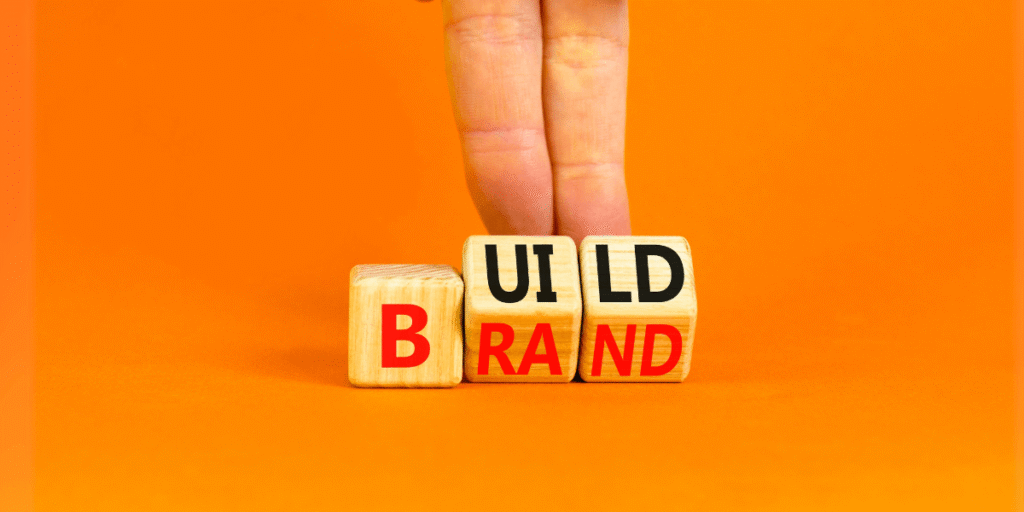
Why Branding Matters More Than Ever in Today’s Digital Landscape
In today’s saturated digital market, people don’t just buy products—they buy meaning, values, and emotional connection. A strong brand can influence consumer decisions, drive loyalty, and create advocates.
📊 Stat Insight:
According to Edelman, 64% of consumers base purchasing decisions on a brand’s stance on social or political issues.
Branding is more than a logo—it’s your business’s reputation, emotional promise, and positioning in the market.
The Tangible Benefits of Strong Branding
🎯 Customer Recognition and Recall
Think McDonald’s arches or Nike’s swoosh. Consistent brand presentation can boost revenue by 23% (Lucidpress, 2022).
💸 Premium Pricing Power
Consumers pay more for trusted brands. Apple, for example, sells experiences and brand prestige—not just devices.
💖 Increased Loyalty and Retention
Brands that connect emotionally enjoy 67% higher spending from loyal customers (Adobe).
👥 Talent Attraction and Retention
Top brands attract top talent. Companies with strong brands receive 50% more qualified applications and lower hiring costs.
📈 Better Marketing Performance
A clear brand identity boosts marketing efficiency and ROI by aligning messaging across channels.
The 7-Step Process to Building a Powerful Brand
Step 1: Define Your Brand Purpose and Values
Ask yourself:
- What do we stand for?
- What do we believe in?
- How do we aim to impact the world?
Example:
Patagonia’s brand purpose—centered on environmental activism—shapes every aspect of its identity, from design to social campaigns.
Step 2: Research Your Target Audience
To build a relevant brand, you must know who you’re speaking to.
- Conduct surveys and interviews
- Build buyer personas (demographics + psychographics)
- Identify customer pain points and aspirations
- Observe how your audience interacts with competitors
💡 Pro Tip:
Understand what emotions your audience seeks—security, prestige, fun, or purpose.
Step 3: Analyze Your Competition
Conduct a competitive brand audit:
- Who are your direct and indirect competitors?
- What are their messaging and visuals?
- Where are the gaps in the market?
Example:
Dollar Shave Club disrupted the grooming market with humor and convenience, standing out in a dull category dominated by legacy brands.
Step 4: Craft Your Brand Positioning
Clearly articulate your place in the market.
📌 Brand Positioning Template:
For [target audience], [brand name] is the [category] that provides [unique benefit] because [reason to believe].
Example: For time-strapped millennials, FitFuel is the snack brand that provides clean energy because it uses 100% natural superfoods in on-the-go packs.
Step 5: Develop Your Brand Identity
Visual Elements:
- Logo – Clean, scalable, unique
- Color palette – 3–5 strategic brand colors
- Typography – Fonts that reflect personality
- Imagery – Consistent photo/illustration style
- Design elements – Icons, patterns, etc.
Verbal Elements:
- Brand name & tagline
- Voice & tone guide
- Messaging pillars
Example:
Mailchimp uses playful illustrations and a friendly tone to make complex email automation feel accessible.
Step 6: Create Brand Guidelines
Document rules to protect your brand consistency:
- Logo usage (size, spacing, variations)
- Colors (HEX, RGB, CMYK)
- Font hierarchy
- Image guidelines
- Brand tone and messaging samples
- Do’s and Don’ts
💡 Pro Tip:
Host your guidelines in a shareable cloud folder or digital brand portal.
Step 7: Implement and Monitor Your Brand
A brand launch is just the beginning.
- Train employees and partners
- Maintain visual and tonal consistency
- Use surveys and social listening
- Monitor brand KPIs and refine over time
Example:
Slack uses ongoing feedback and social monitoring to ensure its tone remains human, helpful, and fun.
Common Branding Mistakes to Avoid
❌ Inconsistency Across Channels
Inconsistent visuals or voice confuse customers. Align across your website, ads, packaging, and social media.
❌ Copying Competitors
Understanding your competitors is useful—but mimicry makes you invisible. Be authentically different.
❌ Ignoring Internal Branding
Your team must live your values. Without internal buy-in, your brand won’t be convincingly expressed externally.
❌ Failing to Evolve
Brands must evolve or risk irrelevance. Revisit your brand every few years to stay aligned with the market and culture.
❌ Prioritizing Looks Over Substance
A beautiful logo is worthless if your brand promise falls flat. Delivering consistently builds credibility.
Case Study: How Airbnb Rebranded into a Lifestyle Brand
Airbnb’s 2014 rebrand did more than update its visuals—it redefined its identity.
- Purpose: “Belong Anywhere”
- Symbol: The “Bélo” icon representing people, places, and love
- Visual System: Cohesive UX, images, and design
- Strategy: Focus on host and guest storytelling
🎯 Result: Airbnb evolved into a global lifestyle brand, laying the foundation for services beyond lodging, including Airbnb Experiences and Luxury Stays.
How to Measure Brand Success: Key Metrics to Track
📊 Awareness Metrics
- Direct search volume
- Brand recall
- Social followers
- PR mentions
💬 Perception Metrics
- Net Promoter Score (NPS)
- Brand sentiment (via tools like Brandwatch)
- Surveyed customer perception
💼 Behavior Metrics
- Customer retention and LTV
- Willingness to pay premium
- Branded keyword conversions
- Employee retention
Building a Brand That Lasts: Final Thoughts
A brand is not a one-time logo update—it’s a living, evolving system.
By aligning your purpose, audience, and experience, you create a brand that earns trust, builds loyalty, and drives long-term growth.
Consistency builds trust. Authenticity earns loyalty.
Your Next Steps in Brand Building
✔️ Conduct a brand audit
✔️ Talk to customers for insights
✔️ Define or refine your brand purpose
✔️ Build or update your brand identity kit
✔️ Apply your branding across every customer touchpoint
Let’s Talk
💬 Which part of the brand building process do you find most challenging?
Leave a comment or connect with us to share your story and ask your questions!
